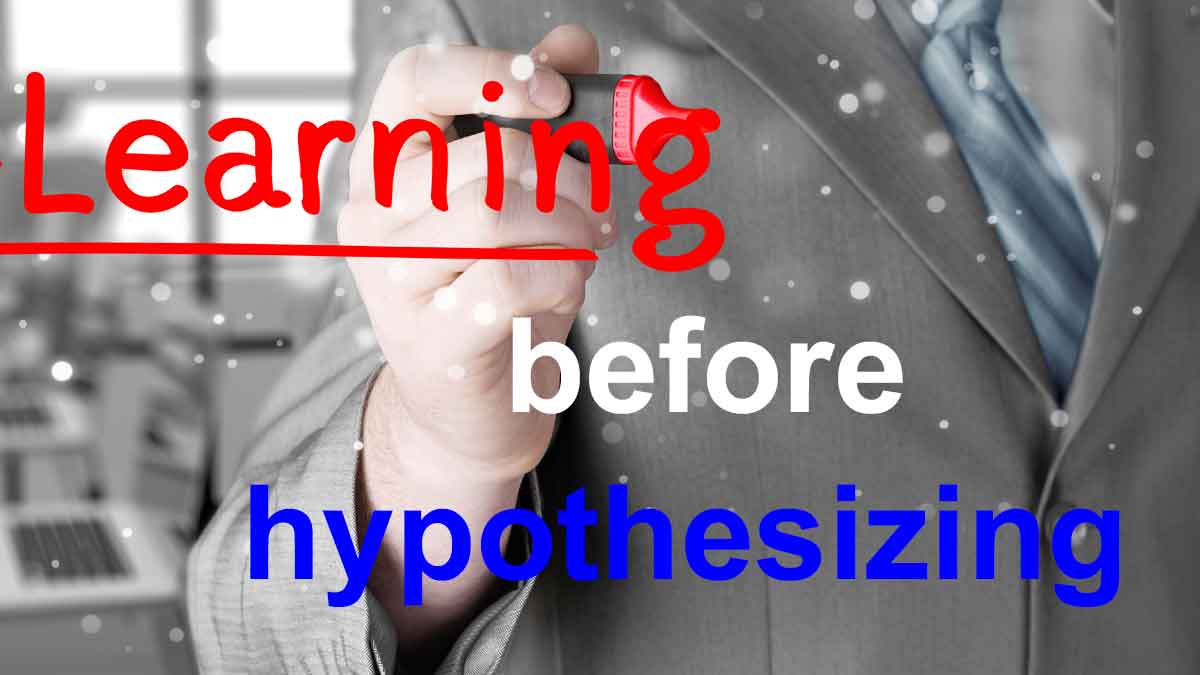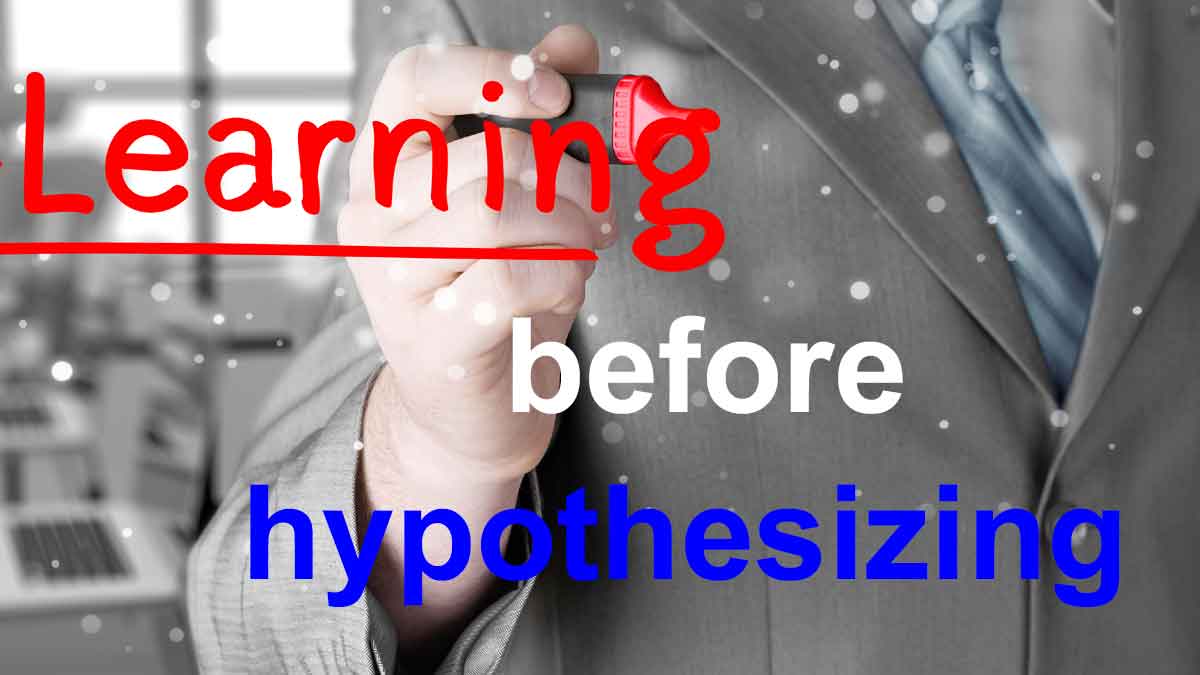Confirmation bias is the “tendency for people to favor information that confirms their preconceptions or hypotheses, regardless of whether the information is true.” It’s what happens when you take your lovely new-product hypotheses to customers. This systematically distorts data on customer needs… and that can’t be good for innovation, right?
More in 2-minute video at 35. Insist on data-driven innovation
Your new product development should start where it ends: with the customer. When you take your “pride and joy” hypothesis to customers and ask their opinion, two bad things can happen: 1) They tell you what they think you want to hear. 2) You hear what you want to hear. Start by uncovering their needs, not testing your pre-conceived notions. And be sure to use quantitative interviews to eliminate confirmation bias.
More in 2-minute video at 35. Insist on data-driven innovation
In many areas of life, there’s the “old way” and the “new way.” Does your company still develop “hypotheses” internally, and then meet with customers to validate them? This can lead to confirmation bias for you and stifled yawns for your customers. In the “new way,” you start by uncovering customer needs, not by internally “ideating” your solutions.
More in e-book, Reinventing VOC for B2B
The “Build-Measure-Learn” cycle in Lean Startup begins with a hypothesis, and is great for B2C. End-consumers can seldom tell you what will amuse them or increase their sense of self-worth. But knowledgeable B2B customer can predict their desired outcomes. So start with a “Learn” pre-step. Customers will tell you all you need if you know how to ask.
More in white paper, Lean Startup for B2B (page 3)
Some companies use the front end of innovation to validate hypotheses or make financial projections. Wrong approach. The front end is a time for learning what you didn’t know, not analysis. Successful teams usually pursue a market without a solution but with an open mind. Converge too soon, and you’ll often miss the best fodder for innovation.
More in e-book, Reinventing VOC for B2B
I love it when our clients have cool technology and clever ideas. But don’t mention these to customers during VOC interviews. From the customer’s perspective, the interview should look exactly the same whether or not you’ve got a great hypothesis. Give your hypothesis the silent treatment for now. Simply listen to the customer.
More in article, Give your Hypothesis the “Silent Treatment” (Originally published in B2B Organic Growth).
Confirmation bias is the “tendency for people to favor information that confirms their preconceptions or hypotheses, regardless of whether the information is true.” It’s what happens when you take your lovely new-product hypotheses to customers. This systematically distorts data on customer needs… and that can’t be good for innovation, right?
More in article, Give your Hypothesis the “Silent Treatment” (Originally published in B2B Organic Growth).
Your new product development should start where it ends: with the customer. When you take your “pride and joy” hypothesis to customers and ask their opinion, two bad things can happen: 1) They tell you what they think you want to hear. 2) You hear what you want to hear. Start by uncovering their needs, not testing your pre-conceived notions.
More in article, Give your Hypothesis the “Silent Treatment (Originally published in B2B Organic Growth).
In many areas of life, there’s the “old way” and the “new way.” Does your company still develop “hypotheses” internally, and then meet with customers to validate them? This can lead to confirmation bias for you and stifled yawns for your customers. In the “new way,” you start by uncovering customer needs, not by internally “ideating” your solutions.
More in article, Give your Hypothesis the “Silent Treatment” (Originally published in B2B Organic Growth newsletter).
The “Build-Measure-Learn” cycle in Lean Startup begins with a hypothesis, and is great for B2C. End-consumers can seldom tell you what will amuse them or increase their sense of self-worth. But knowledgeable B2B customer can predict their desired outcomes. So start with a “Learn” pre-step. Customers will tell you all you need if you know how to ask.
More in white paper, Lean Startup for B2B (page 3).










